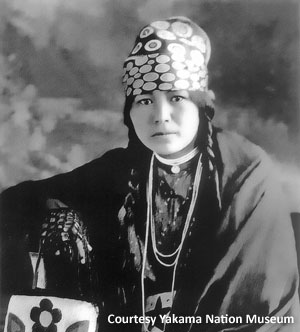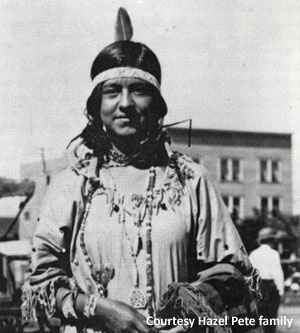
Fear of boarding school drove Alice Charley (StuYat) into hiding for 18 years. Born
in 1909, Alice lived with two grandaunts in Spearfish, a small community on the
Columbia River. Alice never enrolled in the Yakama Tribe as a child. Without tribal
identification, she eluded agents as they swept homes for boarding school students.
At home, the Yakama immersed herself in her Native culture. She learned five dialects,
scraped hides and gathered food.
“My mother was a weaver and a bead worker and she was very proficient with
taking care of salmon in every way,” says daughter Vivian Harrison. “By
that I mean cleaning it, cutting it, drying it and preparing it.”

A Chelalis woman born in 1914 took a much different path. Hazel Pete (Tsl-Stah-Ble)
never forgot the drumming and chanting she heard as a Makah war canoe landed at
Tulalip Bay in the 1920s. “Don't let me go,” a Makah child pleaded
with the crew. That day, the 40 Makah children became classmates of Hazel's
at Tulalip Boarding School. They cut their hair and dressed like the whites.
Entrenched in a new culture and fighting stereotypes, Hazel had an epiphany. “Learning
was always the door open to me,” Hazel said years later. “I did not
know that Indians were [assumed to be] shy, dumb, dropouts… For a good student,
the door was opened for a great opportunity.”
Hazel's devotion to education never waned. She revived Native basket weaving
after attending an art program at Santa Fe Indian School. In her sixties, she earned
her master's degree.